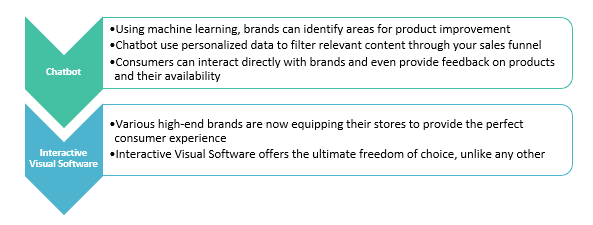Data Revolution: Unleashing the Power of Big Data in the Cosmetics Industry
Cosmetics industry
The cosmetics industry refers to the sector that manufactures and sells cosmetics. This includes colour cosmetics such as foundations and mascaras, skin care such as moisturizers and cleansers, hair care such as shampoos, conditioners, and hair colouring, and toiletries such as bubble baths and soaps. Manufacturing is dominated by a few multinational corporations with their origins in the early 20th century, while cosmetics distribution and sales are spread across a large number of different companies. The largest cosmetics companies are Johnson & Johnson, L’Oréal, Gillette, Nivea, and Chanel.
Impact of data science on the cosmetics industry
So why shouldn’t the cosmetics industry benefit from the changes and advances brought about by data science? Who could have imagined? Data scientists are working on how artificial intelligence can revolutionize the cosmetics industry. Provide consumers with a more personalized experience, even at the salon scale. The data allows manufacturers to know:

As such, there is a significant shift in consumer demand for a more personalized shopping experience rather than settling for generic products.
Importance of data science in the cosmetics industry
Data science has helped the cosmetics industry analyse trends and develop new campaigns. With luxury brands such as L’Oréal, Coty, and Procter and Gamble, with the world’s 9th largest supply chain in over 190 countries, there is no room for error. Luckily, the target market is Generation Z, a segment of society that has a strong belief in internet usage. Therefore, their feedback, interests, and behaviour are easy to capture.
Big data for the cosmetics industry
As in all areas, big data helps brands optimize every process. The data collected is used to improve the overall user experience, from packaging design to product development to marketing. Companies use Model Ops to analyse big data. It helps you analyse lab results, experiments, images, and raw data for the benefit of product development. It also helps with opportunity analysis, audience targeting, and case management.
Here are some examples of how brands can use big data to benefit their products.

Algorithms and machine learning for consumers
Algorithms are a great innovation. They can be adjusted, analysed, and improved using data. Recently, the use of functional analysis tools has enhanced the results. By examining the condition of hair and skin, cosmetic brands can analyse the exact condition. With this information, brands can create the perfect skin and hair care, makeup, and emollients to compliment your skin and hair. The software remembers your progress & use this information to develop the products to achieve maximum results.

Conclusion
The cosmetics industry is in the midst of a revolution. However, companies have different segments to analyse and fix discrepancies. By using data and trends as intelligence, brands can further widen gaps in their customer base. For example, there are large gaps in male grooming, the proportion of children, and the aging population. Additionally, there is a growing interest in using natural ingredients and homemade products rather than luxury brands. These factors help brands understand how their products are made and marketed. It helps older and independent brands build a positive brand image and compete in the market.
Author: Dipanshi Singh
